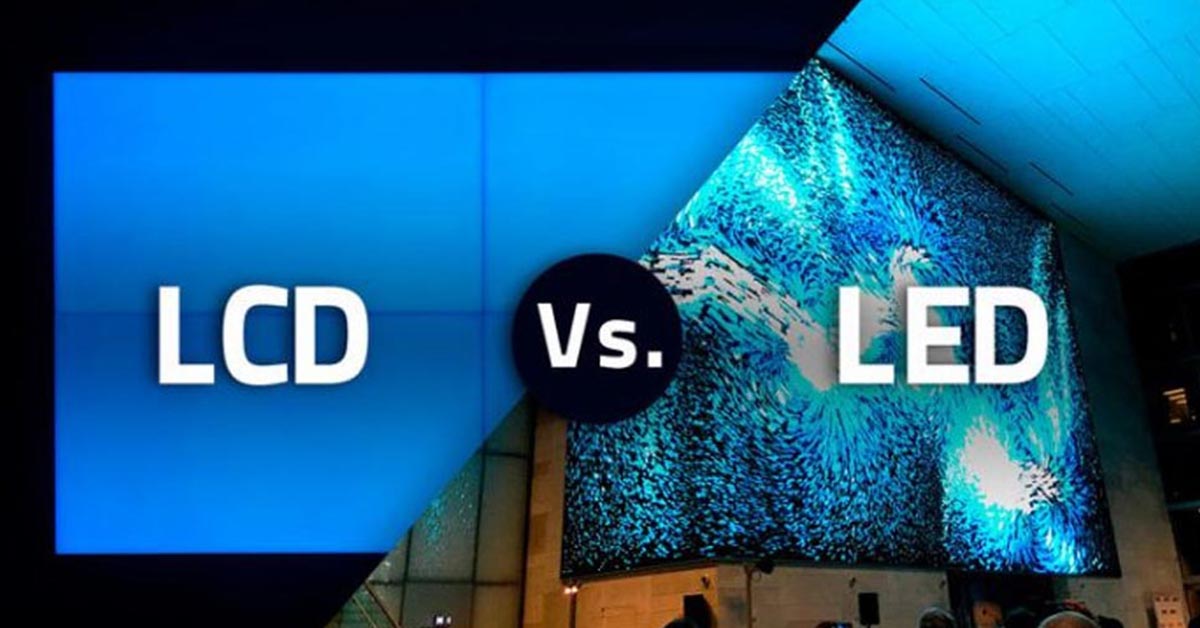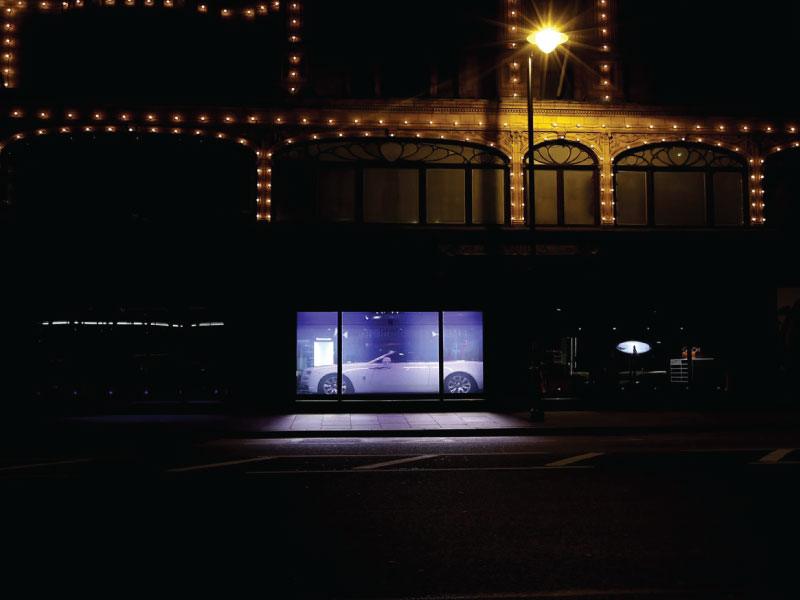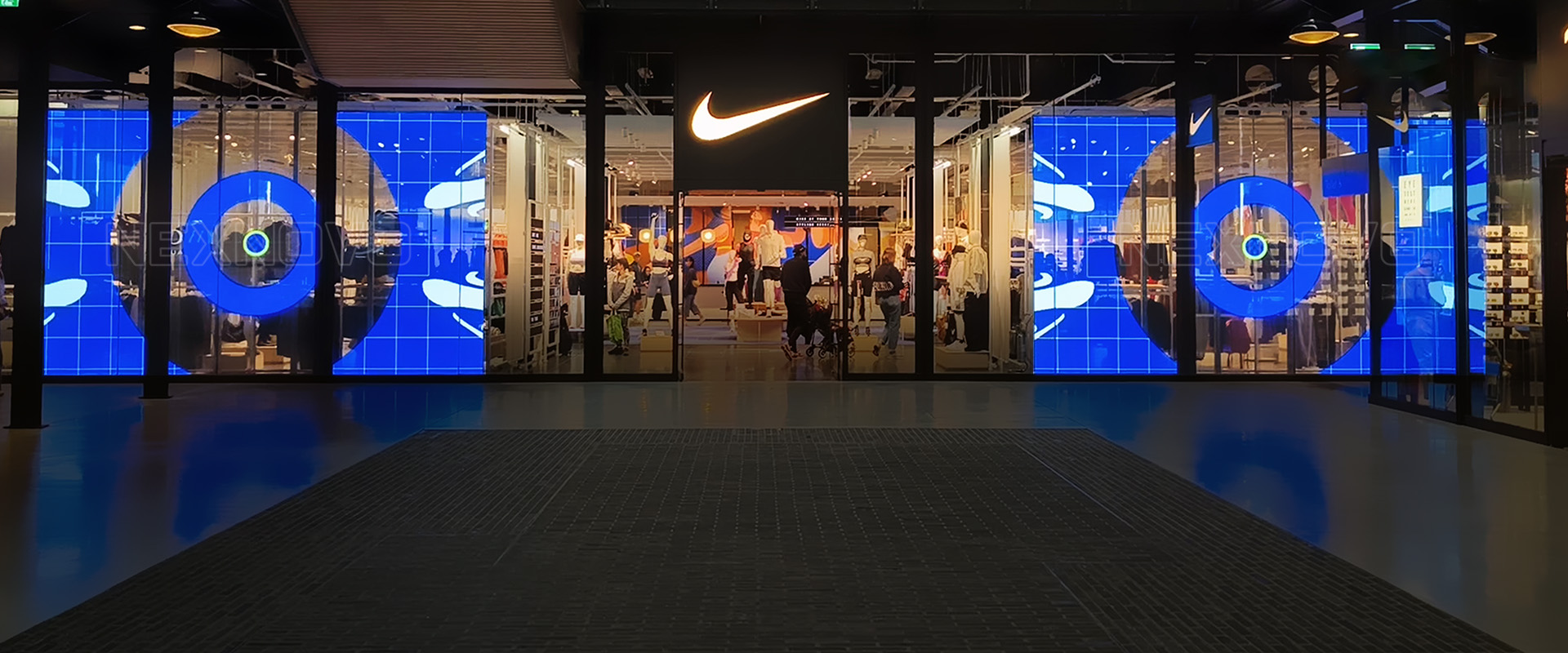

Walk down any high-end shopping district or visit a trade show floor today and you might notice something surreal: a floating video ad hovering mid-air on a glass wall. You can still see the store interior, the product displays, the ambient lighting. That’s not CGI—that’s a transparent LED display in action. This cutting-edge screen technology is redefining the way brands present themselves, merging digital media with architectural transparency.
Transparent LED displays—sometimes called see-through advertising screens or glass LED screens—are digital signage systems built using micro-LEDs mounted on a transparent substrate. This allows light and visuals to pass through simultaneously. In simple terms, it’s a digital display you can see through, creating a seamless integration of multimedia and real-world visibility. Whether used in a boutique storefront window, luxury retail space, car showroom, or as part of an immersive event setup, transparent screens offer an elegant solution for capturing attention without blocking the environment behind them.

Traditional LED screens are fantastic for delivering bright, high-resolution visuals, but they often come with a trade-off: they block visibility. That might be acceptable for billboard-style usage, but it’s far from ideal for a brand that wants to blend digital storytelling with real-world ambiance—especially in luxury retail. That’s where transparent digital signage makes a powerful entrance. A retail window LED display powered by transparent technology lets retailers advertise promotions, showcase animations, and captivate foot traffic without sacrificing their physical product displays or interior aesthetics.
This isn’t just about appearances. Modern shoppers are drawn to experiences. Transparent screens make it possible to deliver high-impact digital content—think motion graphics, interactive displays, even real-time social media updates—while still preserving the open feel of your physical store.

The technology behind a transparent LED screen is deceptively simple, yet incredibly sophisticated. A grid of microscopic LED lights is embedded onto a transparent glass or acrylic panel. These lights emit video and animations while leaving space between pixels to allow light—and vision—to pass through. When viewed from a normal distance, the gaps are virtually invisible, creating the illusion of floating images or videos on glass.
Unlike traditional displays that rely on back panels or reflective surfaces, transparent LEDs often use an edge-lit or embedded panel design, allowing them to be ultra-thin and light. Brightness levels typically range from 3,000 to 6,000 nits, making them suitable even for sun-drenched street-level windows. High-end variants, like transparent OLED displays, take this a step further by embedding organic LEDs directly into glass substrates—offering vibrant colors, wider viewing angles, and even touch interactivity.
One of the most compelling use cases for transparent LED displays is digital signage for storefront windows. Fashion boutiques, tech shops, cosmetic stores, and jewelry retailers have started using transparent digital signage to create captivating displays that don’t interfere with the view of the products behind the glass. It’s like turning your shop window into a live magazine cover—dynamic, luxurious, and smartly integrated.
But storefronts are just the beginning. Transparent displays are making waves in the event industry, too. Whether it’s a product launch, a trade show, or a branded pop-up, transparent display booths let marketers blend physical installations with multimedia content in one striking visual space. You can now rent transparent screens for events, install an entire transparent LED wall behind a speaker, or use a transparent video wall to showcase products in an exhibit hall without hiding the exhibit itself.
In hospitality, these displays provide real-time guest information in hotel lobbies, ambient video art in lounges, or branding installations for events and banquets—all while letting the original architecture breathe.
And let’s not forget car showrooms. Transparent screen installations on showroom glass walls allow real-time vehicle specs, brand videos, and seasonal promotions to run without blocking the view of the models inside. For real estate offices, museums, cannabis boutiques, and even luxury residential buildings, the same approach applies: digital media meets spatial design.

The whole point of transparent LED displays is that it merges visibility with utility. Customers want to see inside. They want to feel connected to what’s happening on the other side of the glass. By using a transparent digital panel instead of a traditional screen, brands maintain openness, invite curiosity, and elevate their space into something memorable.
Interactivity adds another layer. Some systems are touch-sensitive, enabling viewers to explore products, book services, or interact with live content on the screen itself. For modern retail, it’s a step toward immersive advertising displays—blending ecommerce-style engagement with real-world presence.
Setting up a transparent LED display is more flexible than you might expect. Panels are often modular, allowing for custom sizes that suit any architectural layout. You can mount them behind existing glass, embed them into new constructions, or suspend them in windows. Lightweight and ultra-thin formats make them suitable even for older buildings or mobile pop-up units.
Brands often choose between purchasing a system or going through a transparent screen rental provider, especially for one-off events, trade fairs, or seasonal campaigns. Installation teams usually include experts who assess glass structure, wiring, brightness needs, and local regulations for digital signage.
Maintenance is relatively low, thanks to LED efficiency and robust weatherproofing on outdoor models. Content updates can be managed remotely using a cloud-based CMS, giving marketers and store owners full control of the messaging in real-time.
Transparent LED displays aren’t cheap, but their value lies in their impact. Depending on the resolution and size, a screen may range from a few thousand to tens of thousands of dollars. But the returns—measured in foot traffic, social media shares, brand perception, and customer engagement—often justify the investment. Even more so in competitive retail environments where every window must perform like a marketing asset.
Transparent LED screen cost is also becoming more competitive. Suppliers across the USA, including major cities like Los Angeles and New York, now offer rental and purchase options with full installation support. As adoption grows, expect the price to drop, just like we saw with traditional LED signage a decade ago.
With the rise of smart buildings and immersive marketing, transparent displays are only getting smarter and more versatile. Transparent OLED panels are already entering the luxury home and automotive markets. Transparent displays for hotel lobbies and office entrances will soon deliver not just ads, but AI-driven concierge experiences.
Expect to see transparent display screens at exhibits, museums, and entertainment venues—blending physical storytelling with augmented reality-like visuals. As brands seek new creative digital signage ideas, transparent screens offer a blank (and see-through) canvas for imagination.
Holographic display screens, transparent LED video walls, and clear LED advertising panels are now more than novelties—they’re becoming the new gold standard for futuristic, high-end marketing.
Transparent LED displays are more than just a flashy tech trend. They represent a paradigm shift in how we think about screens—not as obstructions, but as enhancers of space, light, and message. Whether you’re looking to buy a transparent LED screen for a permanent installation, rent a transparent screen for a one-time event, or install a full digital storefront screen system, there’s a solution that can align with your brand’s goals and audience.
This is digital signage that doesn’t block your view. It illuminates your story—clearly, beautifully, and without barriers.